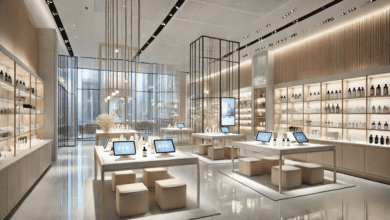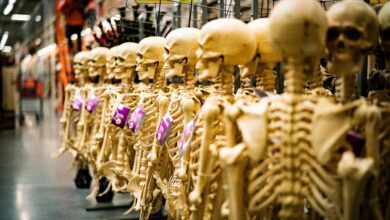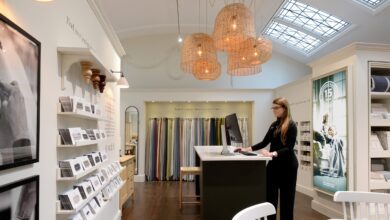A practical guide to visual merchandising for retailers
Visual merchandising is the art and science of creating compelling in-store displays that captivate customers, entice them to explore your products, and ultimately drive sales. It's a crucial aspect of retail that can significantly impact your store's success. To help you make the most of your visual merchandising efforts, we've put together a practical guide for retailers.

Understand your target audience
Before diving into visual merchandising, take the time to understand your target audience. Who are your customers? What are their preferences, lifestyles, and shopping behaviours? The better you know your audience, the more effectively you can tailor your displays to appeal to their interests and needs.
Plan your store layout
Efficient store layout is the foundation of successful visual merchandising. Start by creating a store plan that guides customers through a logical shopping journey. Place high-demand or seasonal items near the entrance to capture attention, and use pathways to guide shoppers to different sections of the store. Keep traffic flow in mind to prevent congestion.
Develop a consistent brand identity
Consistency is key in visual merchandising. Your store should reflect your brand’s identity and values. Choose a color scheme, signage, and decor that align with your brand, and use them consistently throughout your store. This helps create a cohesive shopping experience that customers will remember.
Create eye-catching window displays
Your storefront windows are prime real estate for grabbing the attention of passersby. Develop eye-catching window displays that tell a story or convey a theme. Change them regularly to keep your store looking fresh and exciting. Consider using props, lighting, and seasonal elements to make your displays pop.
Highlight best-selling and new products
Prominently feature your best-selling and new products. Use focal points, such as tables or display shelves, to showcase these items. Use signage or graphics to communicate their benefits and why customers should consider them.
Play with visual hierarchy
Visual hierarchy is the principle that guides the order in which customers notice and engage with products. Place the most important or high-margin items at eye level, where they’re easily seen. Use shelving and stacking techniques to create depth and interest.
Pay attention to lighting
Proper lighting can dramatically impact how customers perceive your products. Use a combination of ambient, accent, and task lighting to highlight specific areas or products. Experiment with different lighting temperatures to create the desired mood or atmosphere in your store.
Rotate displays regularly
Keep your store looking fresh by rotating displays regularly. Change the layout, product placements, and signage to prevent customer fatigue. Seasonal rotations can also help keep your store relevant and exciting.
Monitor and Adapt
Visual merchandising is not a one-time task but an ongoing process. Pay attention to customer feedback and sales data to determine what’s working and what needs adjustment. Stay attuned to industry trends and be willing to adapt your displays accordingly.
Train Your Staff
Your staff plays a vital role in maintaining the visual merchandising standards you’ve set. Provide training on the importance of visual merchandising and ensure they understand the reasoning behind your store’s layout and displays.







